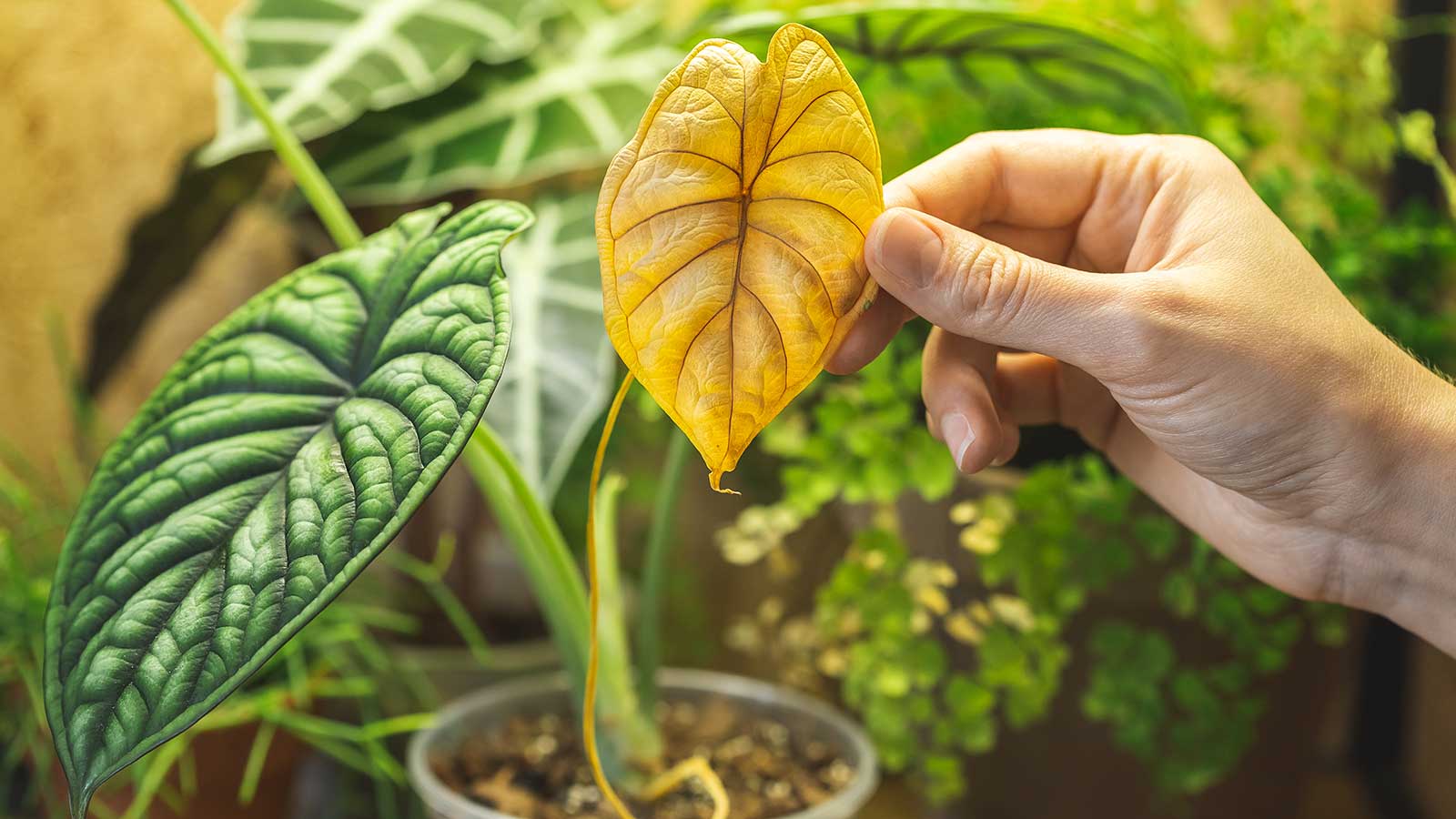
Q: I have recently added an alocasia to my houseplant collection. It has large leaves, which are usually green, but some have quickly turned yellow in the last week or so. What should I do?
A: Alocasias are a type of elephant ear plant, and their statement leaves make them a popular tropical indoor plant. Over time, it's natural for their fabulous foliage to turn yellow. But, it can also signal a problem, meaning something isn't quite right in their growing environment.
Knowing the causes of a change in color can help you tackle a yellowing elephant ear plant properly. Below, houseplant experts explain common reasons, from watering issues to aging plants.
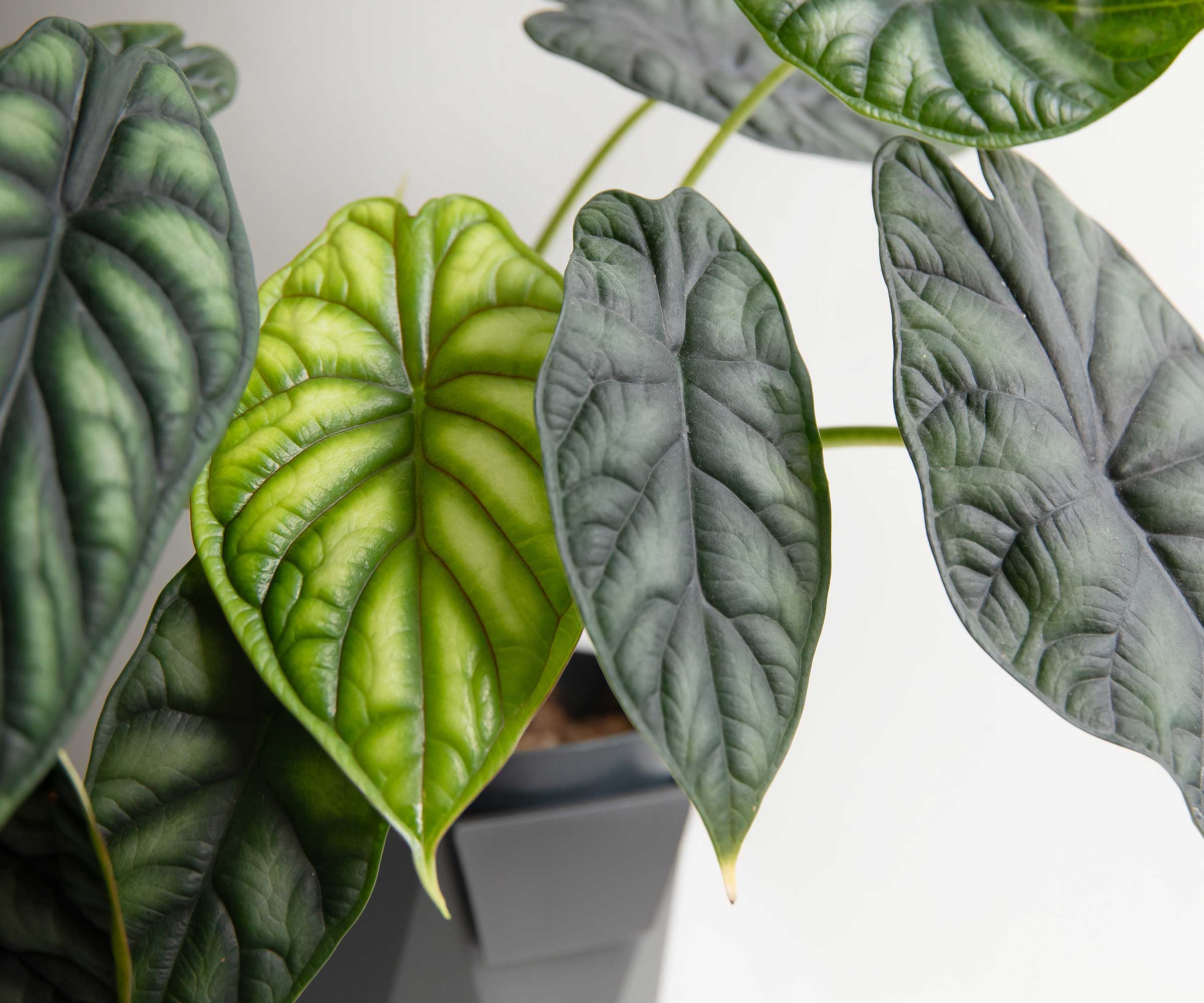
4 reasons why elephant ear plants can turn yellow
These informative tips will help keep your beautiful indoor plants healthy and looking their best, ensuring that your indoor jungle looks as good as possible.
1. Natural aging
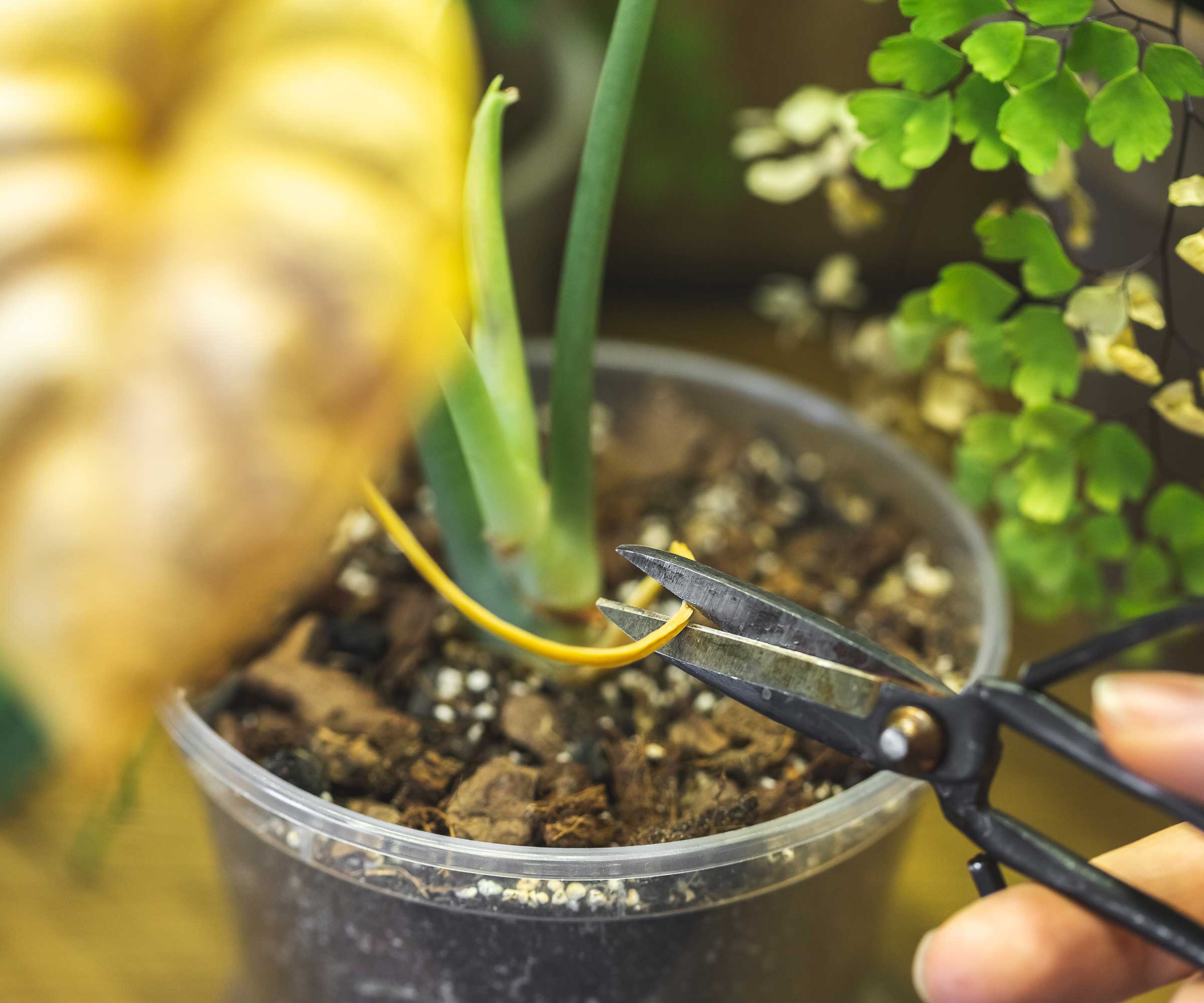
Your yellowing alocasia might not be a cause for concern. Lisa Eldred Steinkopf of The Houseplant Guru explains how it is normal for leaves to turn yellow, die, and then drop off the plant as they age.
'If the rest of your plant seems healthy, it is probably just an old leaf,' she says. 'If the plant continues to develop yellow leaves or multiple yellow leaves at once, that is an indication there is a problem.'
2. Incorrect watering
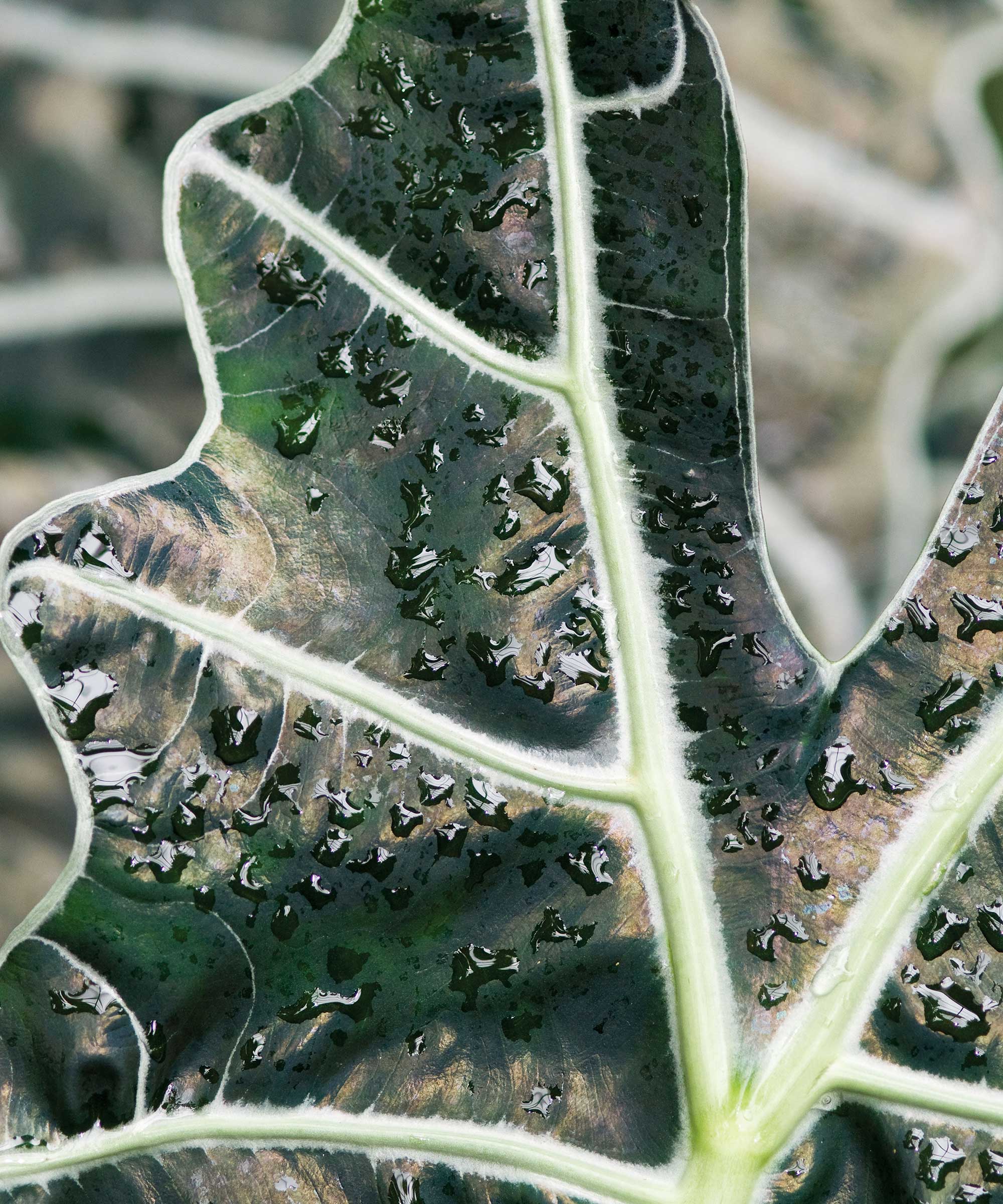
Watering houseplants properly is crucial for keeping them healthy, but it can be a bit of a balancing act.
Poor drainage or overdoing the H2O can lead to root rot, which can eventually kill plants. If you've accidentally done this, you may need to remove any damaged sections before repotting your alocasia into fresh compost. 'The containers should have a drainage hole so the water can drain,' notes Lisa.
On the other hand, not watering enough can also result in alocasias drooping and developing yellow leaves.
Nastya Vasylchyshyna, a resident botany expert at Plantum, recommends giving the plant a drink once the soil gets dry, soaking the growing medium all the way through.
3. Pest problems
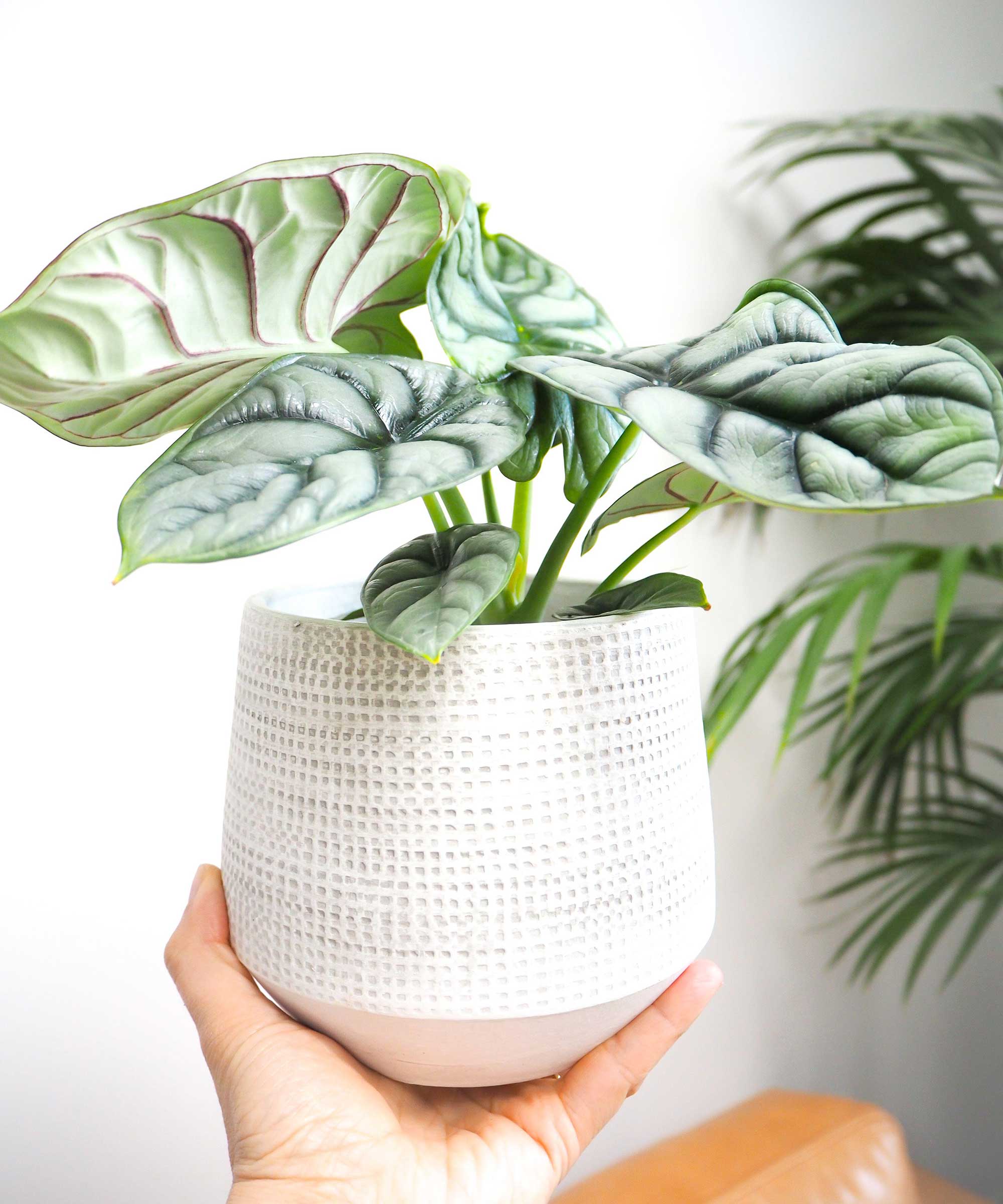
According to Lisa, yellow spots on your alocasia can signal the beginnings of a houseplant pest infestation, such as spider mites. 'If untreated, the leaves will eventually turn completely yellow and die.'
She recommends checking the undersides of the leaves and the areas where the leaves meet the stems. Webbing on the leaves can be a sign of spider mites.
'Mites love dry plants that are surrounded by dry air,' she says. 'Keep the humidity up by placing your plant on a pebble tray – fill a saucer with pebbles and water and set your plant on the pebbles, making sure it isn’t standing in water.'
Nastya says: 'To get rid of pests, wash the plant under running water and treat it with an insecticidal soap or pesticide.' This Garden Safe insecticidal spray from Amazon is a popular pick.
4. Not enough light
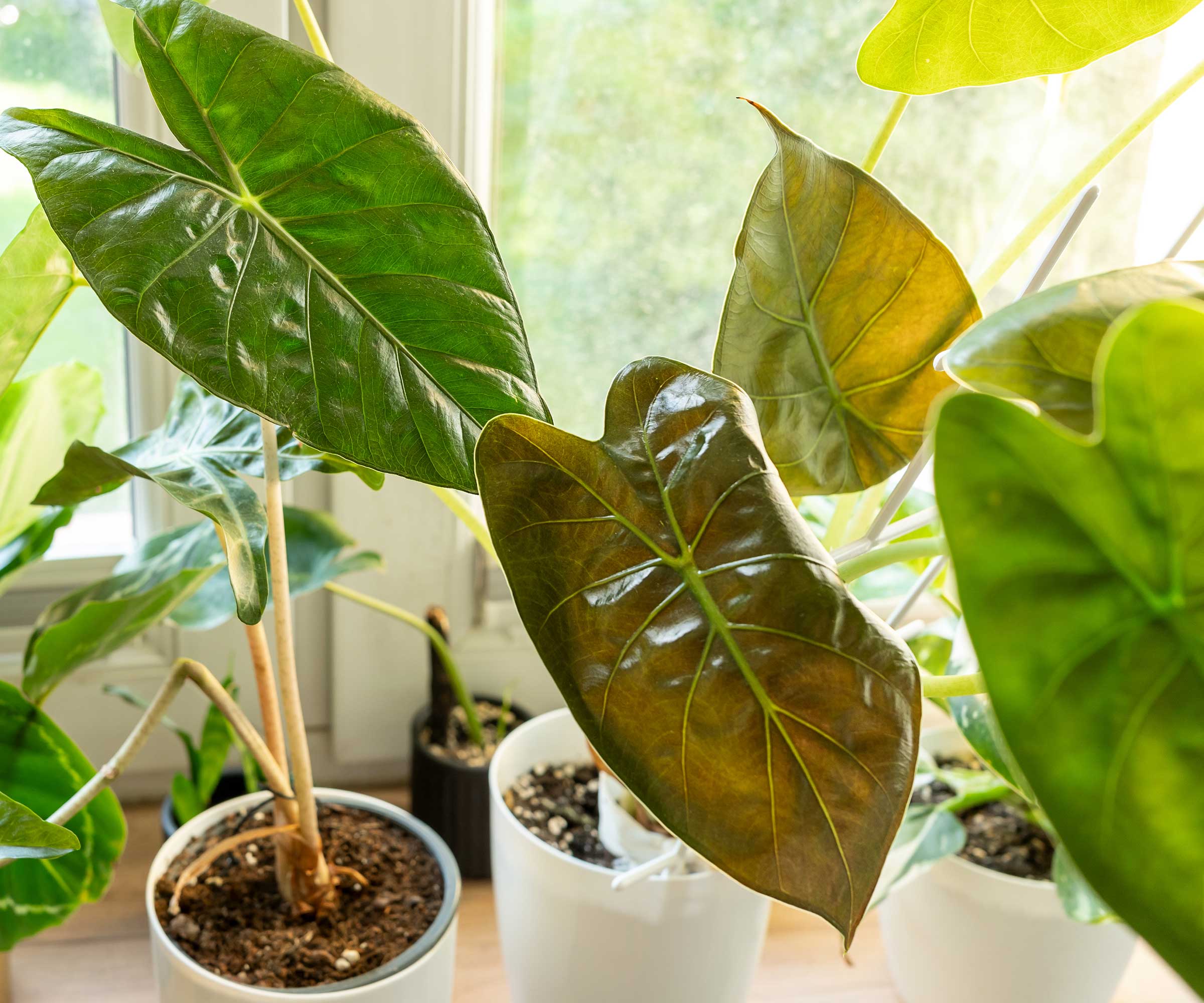
Low light can also lead to yellowing leaves on your alocasia. Lisa says: 'A plant will only keep the leaves it can support with the light it has to use. If it doesn’t have enough light, leaves will die.'
If a lack of light is the issue, yellowing foliage may also be accompanied by small leaves and leggy shoots, notes Nastya. 'The plant needs a lot of bright, filtered light to thrive.'
If you can't find a spot that's bright enough, consider adding grow lights, such as these LED grow lights from Amazon which include a clever timer function.
FAQs
What should you do if your alocasia has turned yellow?
First, try to work out what is causing the change of color, then rectify the cause if needed. 'Hopefully, the plant will recover after the problem is solved,' says Lisa Eldred Steinkopf.
The yellow leaves can be removed, she adds. 'Once a leaf turns yellow, it won’t become green again.' A good pair of sharp and clean pruners, such as these highly-rated bypass pruning shears from Fiskars at Amazon, are perfect for the job.
Are some types of alocasia more prone to yellowing than others?
Do be aware that some varieties of alocasias are naturally more yellow than others. Examples include Alocasia odora 'Variegata Yellow' which has marbled yellow and green leaves, and Alocasia macrorrhiza 'Lutea' which has bright yellow stems.
If you'd like to add more of these striking houseplants to your collection, consider learning how to propagate alocasia. It's a low-cost option that's easier than you might expect.







